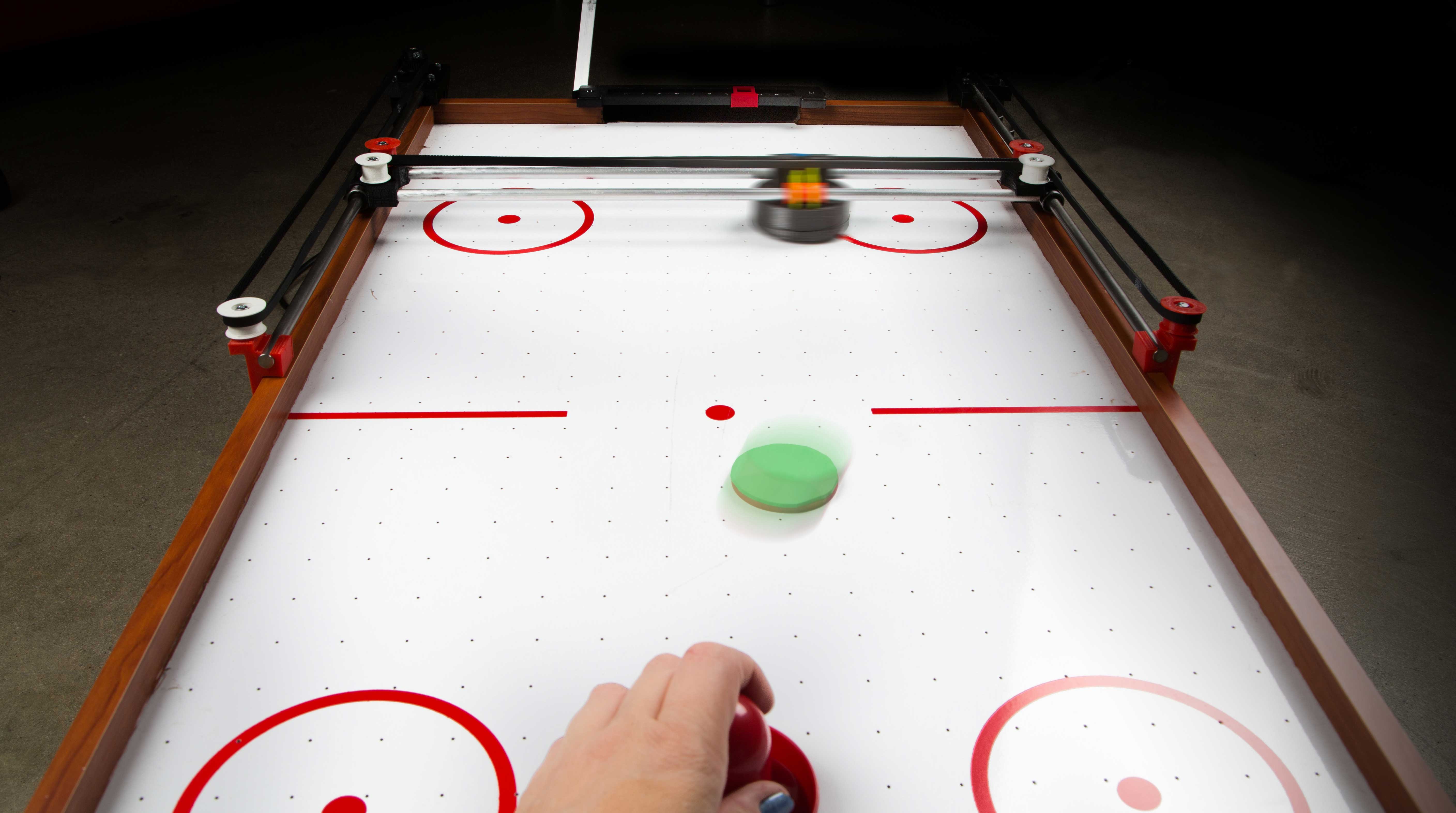

Never be without a worthy adversary with the Air Hockey Robot EVO. It’s easy to set up and deploy, and it’s controlled by your Android smartphone.
This open source robot can be scratch-built using readily available components and 3D-printed parts, or you can buy it as a kit. It requires an air hockey table — we have one we recommend that fits our bot, but you can modify the dimensions to accommodate others.
It’s a fun project that teaches science, robotics, computing, visual recognition, and engineering.
How it Works
The smartphone is the robot’s brain. Running the Air Hockey Robot app, it processes the data captured by its camera in real time, detecting features on the playing court and making attack/defend decisions according to the detected objects’ locations and their trajectories (Figure A). Your own device can defeat you in a real game!

Uniform illumination is extremely important for the vision system to work, so avoid shadows, reflections, and if you can, fluorescent lighting.
Modifiable and Portable
It’s easy to adjust the skill level of the robot, to play with children, for example — just go to the app configuration menu and set the difficulty. You can also set it to “manual” mode and control the robot using your finger, and there is a PlayStation 3 Camera version for the robotics enthusiast, which runs on a regular PC and allows you to modify the vision system. The robot is easily removed from the table for transport, or when you’d rather play against another human.
How it’s Made

The robot is constructed from metal bars, a timing belt, and 3D-printed parts. The electronics consist of the JJRobots Brain Shield, an Arduino Leonardo, 2 stepper motor drivers, and a 12V fan to cool them (Figure B). The robot is locally controlled by the Brain Shield, which dictates its speed and acceleration, sending the appropriate pulses to the stepper motors. For complete instructions visit jjrobots.com/air-hockey-robot-evo.

The key to a flawless working robot is the H-bot system (Figure C); this structure allows the robot to move to any location on its playing field using only two motors (Figure D). The H-bot needs to run smooth and be strong at the same time. The better you set it up, the greater the accelerations you can reach. Here’s how the robot mechanism goes together.

















